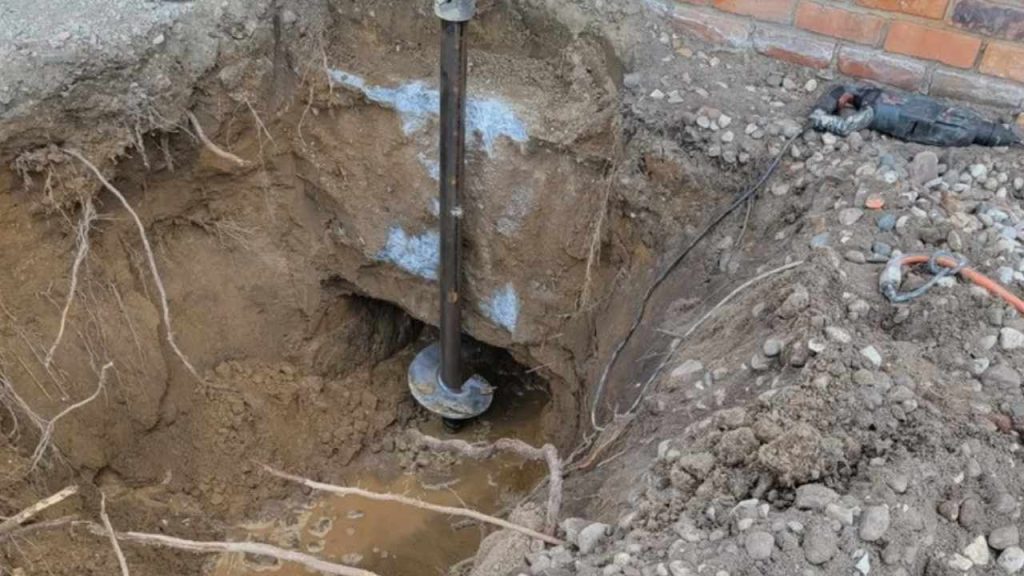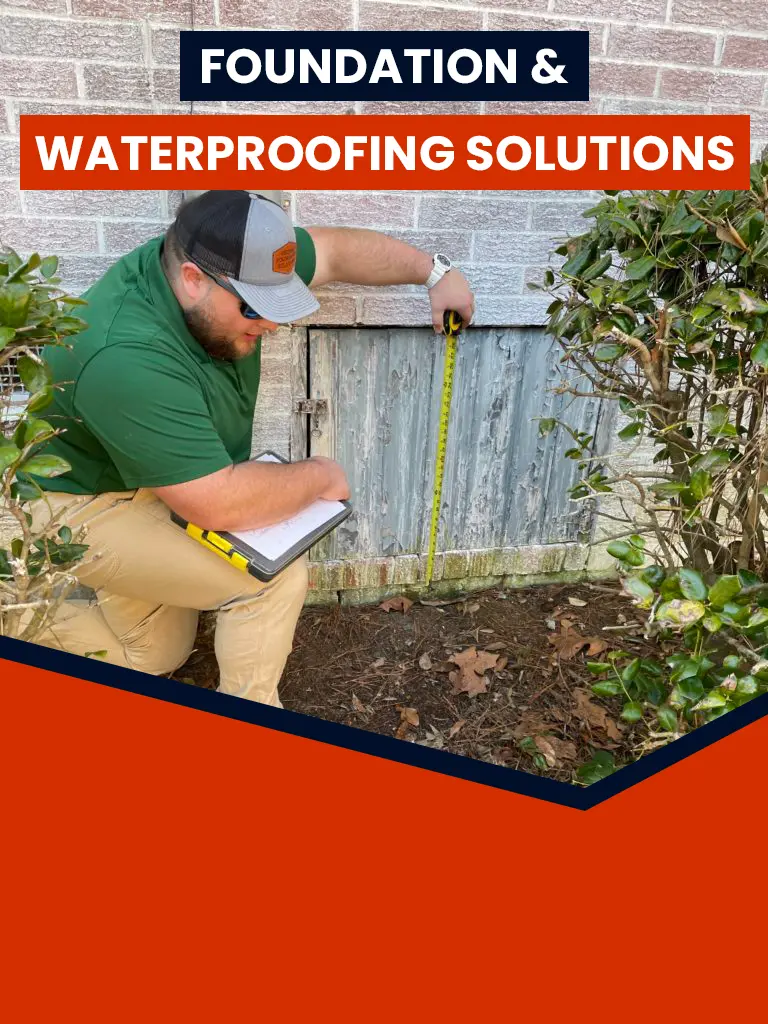Helical piers are an effective solution for stabilizing foundations, especially in areas with shifting or unstable soil. They work by anchoring deep into the ground, bypassing the problematic soil and providing a solid foundation for homes or structures.
However, one of the challenges that can arise during the installation of helical piers is something known as “mud sucking.” This phenomenon can complicate the installation process and even reduce the effectiveness of the piers if not handled properly. In this article, we’ll explain what mud sucking is, how it affects the installation of helical piers, and what steps can be taken to mitigate the issue.
What Is Mud Sucking?
Mud sucking occurs when the soil surrounding a helical pier becomes overly saturated with water, creating a muddy, viscous environment. This often happens in areas with high water tables, heavy rainfall, or clay-rich soils that retain moisture.
When the pier is driven into the ground, the wet, muddy soil can cling to the pier’s shaft, exerting an upward suction force during installation. This not only makes it difficult to achieve the proper depth or torque but can also compromise the effectiveness of the installation by causing the pier to pull back slightly after being set.
This suction effect is particularly problematic because it can undermine the stability of the pier over time, leading to inadequate support for the structure. Additionally, the clinging mud can increase resistance during the installation process, requiring more effort and specialized equipment to ensure the pier reaches stable soil layers, further complicating the procedure.
Mud sucking is typically more of a problem in regions with:
- High water tables
- Heavy rainfall
- Clay or silty soils that retain moisture
In Georgia, with its clay-rich soil and periods of heavy rain, mud sucking is a common issue that contractors must be aware of when installing helical piers. The combination of heavy rainfall and clay’s ability to retain moisture creates an ideal environment for mud sucking, making proper preparation and specialized techniques essential for successful installations in these challenging conditions.
How Mud Sucking Affects Helical Pier Installation
Mud sucking can create several problems during the installation of helical piers. These issues not only complicate the installation process but can also impact the long-term effectiveness of the piers. From reducing bearing capacity to causing installation delays, mud sucking is a significant challenge that requires careful planning and specialized techniques to overcome successfully. These include:
1. Reduced Bearing Capacity
Helical piers rely on being driven deep into stable soil, which provides the necessary support for the foundation. When mud sucking occurs, the suction effect created by the wet soil can prevent the pier from reaching the required depth or achieving the correct torque. This can reduce the pier’s bearing capacity, meaning it may not be able to support the structure as intended.
2. Difficulty Achieving Proper Torque
During installation, helical piers are rotated into the ground to a specific torque level, which indicates that they have reached stable soil and can provide adequate support. When mud sucking occurs, the thick, viscous mud can make it difficult to achieve the proper torque because the pier may encounter resistance from the mud rather than from the underlying stable soil.
3. Pier Uplift
In some cases, after the pier is installed, the mud can create enough upward suction to cause the pier to lift slightly. This is particularly problematic because it can lead to the pier becoming unstable over time, undermining the very purpose of installing helical piers to stabilize the foundation.
4. Longer Installation Times
Mud sucking can significantly slow down the installation process. Workers may need to stop frequently to clear the mud or use specialized equipment to handle the wet soil, leading to longer installation times and increased labor costs.
Preventing and Addressing Mud Sucking During Helical Pier Installation
While mud sucking can be a challenge, there are several strategies that can be used to mitigate its effects and ensure a successful helical pier installation.
1. Pre-Drilling the Holes
In areas where mud sucking is likely to be an issue, pre-drilling the holes for the helical piers can help. Pre-drilling allows the installer to control the soil displacement and create a more stable environment for the pier. This can reduce the amount of suction created by the mud and help the pier reach the necessary depth.
2. Using a Casing
In especially wet or unstable soils, using a casing can help prevent mud from coming into contact with the helical pier during installation. The casing acts as a barrier between the pier and the surrounding mud, reducing the chance of suction and helping the pier achieve proper depth and torque.
3. Pumping Water Out of the Site
If the soil is excessively saturated, pumping water out of the installation site before beginning work can help reduce the mud content and make the soil more manageable. While this won’t eliminate the problem entirely, it can significantly reduce the amount of suction created during installation.

4. Adjusting the Installation Technique
Experienced contractors may need to adjust their installation technique to account for mud sucking. This could involve using slower, more controlled rotations or allowing extra time for the pier to settle between installations. In some cases, contractors may need to use larger or longer piers to ensure they reach stable soil below the wet, muddy layers.
5. Timing the Installation
Whenever possible, it’s best to avoid installing helical piers immediately after heavy rainfall or during times of high groundwater. Waiting for the soil to dry out slightly can help reduce the risk of mud sucking and make the installation process smoother and more effective.
Conclusion
While DIY floor supports can be a quick and cost-effective solution for minor sagging, larger structural issues require expert attention. Georgia Foundation Solutions specializes in diagnosing and repairing sagging floors, weakened joists, and foundation problems. Our team can assess your home’s unique needs and provide tailored solutions, from reinforcing floor supports to addressing moisture control and foundation repairs.
If you’re unsure whether DIY floor supports are the right solution for your home, contact Georgia Foundation Solutions for a professional evaluation. Our experienced team will assess your specific needs and provide expert recommendations tailored to your home. We’ll ensure that your floors are properly supported, addressing underlying issues and protecting your home from long-term structural damage and costly repairs.

